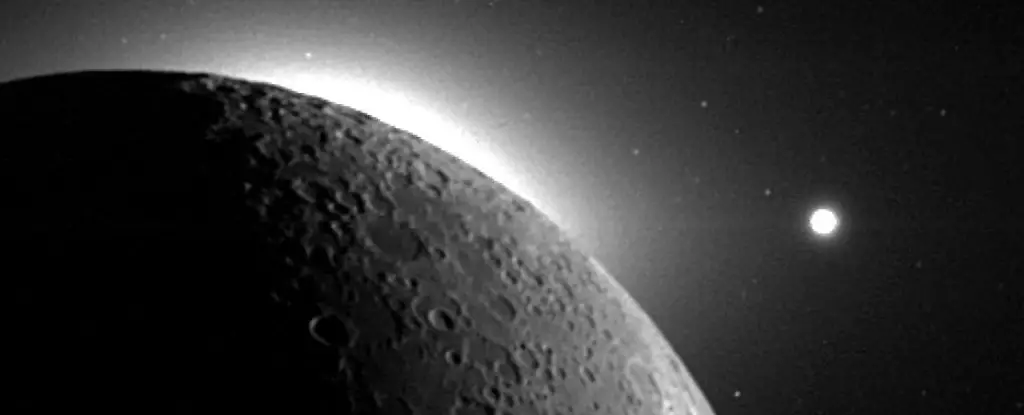The Earth and its Moon stand out as a unique pair within our Solar System. Unlike other planets, which either have numerous moons or none at all, the relationship between Earth and its sole satellite presents a perplexing puzzle. This article delves into the theoretical underpinnings of the Moon’s origin, exploring both the conventional wisdom and emerging hypotheses that challenge long-held beliefs about our natural satellite.
In a cosmos filled with diverse planetary systems, the Earth-Moon duo showcases an extraordinary dynamic. This peculiar bond fuels the curiosity of astronomers and planetary scientists seeking to understand how such a distinctive configuration arose. The established theory posits a shared genesis: the Moon is either a sibling of Earth, formed from the same cosmic material, or a progeny created from debris following a monumental impact between the early Earth and a Mars-sized body.
Yet, recent investigations raise questions about this prevailing narrative. The emerging perspective suggests that our Moon may not be an offspring of Earth but rather an interloper captured by its gravitational influence. This theory, while still in its infancy, opens avenues of research that could radically alter our understanding of planetary formation and dynamics.
Traditionally, the Giant Impact Hypothesis has served as the cornerstone of lunar formation studies. Proponents of this idea argue that a colossal object, often referred to as Theia, collided with the Earth, ejecting material that eventually coalesced into the Moon. This hypothesis is strongly supported by the similar isotopic compositions of the Earth and Moon, indicating a shared ancestry.
However, recent computational advancements by researchers Darren Williams and Michael Zugger from Pennsylvania State University suggest an alternate scenario. They propose a gravitational capture model, which implies that the Moon may have originated elsewhere in the Solar System and was later ensnared by Earth’s gravity. It’s a revolutionary hypothesis that necessitates further scrutiny into what we think we know about lunar origins.
Central to Williams and Zugger’s research is the concept of binary capture, where two celestial bodies can interchange their companions through gravitational interactions. In this framework, if a binary system (two bodies bound together by gravity) passes a third body, the gravitational forces can result in one of the binary objects becoming bound to the third, effectively stealing it away.
Such dynamics have been observed within our Solar System. For instance, Neptune’s moon Triton displays an unusual orbit suggesting it may have been captured from the Kuiper Belt, challenging previous assumptions about the origins of its moon system. When comparing this phenomenon to Earth and its Moon, Williams and Zugger argue that subtle irregularities in the Moon’s orbit signify that it could have been captured through a similar gravitational interaction, rather than forming from the remnants of Earth alone.
To bring this hypothesis into focus, Williams and Zugger employed intricate mathematical modeling to evaluate the feasibility of a Moon-like object being gravitationally bound to Earth. Their calculations led to the astonishing conclusion that Earth could have potentially captured a body significantly larger than the Moon itself, positing that even Mars-sized objects might have been ensnared given the right conditions—despite knowing such scenarios might lead to orbital instability.
This engagement with data paints a picture where an object the size of the Moon could gradually adjust its orbit to become stable over time, while continuing to recede away from the Earth at a steady pace—currently measured at about 3.8 centimeters annually.
While this model introduces a tantalizing possibility, it also introduces complex questions regarding the mineral and isotopic similarities that our Earth shares with the Moon. These consistencies lean more towards a co-formation narrative rather than a capture scenario, prompting consideration of hybrid origin theories that may encompass multiple pathways to explain the data we observe.
As humans continue to explore the depths of our Solar System and beyond, understanding the origins of our Moon also has implications for the search for exoplanets and their moons. Insights gleaned from investigating the Earth-Moon system may help us comprehend how other planetary systems develop, which could ultimately guide our quest for life beyond our own planet.
In sum, the dialogue around the formation of the Moon is shifting from a singular narrative to a multifaceted exploration of cosmic interactions. As Williams aptly notes, “No one knows how the Moon was formed,” reflecting a truth that resonates far beyond our immediate solar neighborhood—the quest for knowledge is always evolving, pushing us to explore the universe’s complexities further than before.


Leave a Reply